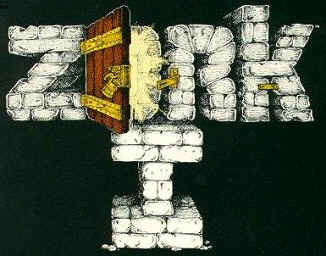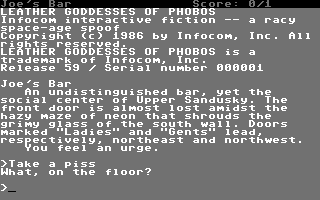|
The Rise and Fall of Infocom
It
was great fun. It was the kind of fun that I think when you are
simultaneously young and doing something that no one has never done before
and succeeding at it, which is even better.
Infocom, the company that
gave us the classic Zork adventure game, was founded on The founders of Infocom were Tim Anderson, Joel Berez, Marc Blank, Mike Broos, Scott Cutler, Stu Galley, Dave Lebling, J. C. R. Licklider, Chris Reeve, and Al Vezza. The masterminds of Infocom's first game, Zork, were Marc Blank (author of Zork, Enchanter, and Deadline), Bruce K. Daniels, Tim Anderson, and Dave Lebling (author of Enchanter, Starcross, Suspect, Spellbreaker, and Lurking Horror). The first Board of Directors consisted of Berez, Broos, Galley, Lebling, and Vezza. Infocom called its employees Imps, after "implementer" which was some MIT jargon. Infocom's first commercial version of Zork I was written for the PDP-11 and then a version was released for the TRS-80 Model I in 1980. In 1981, Zork was ported for the Apple II. It proved wildly popular. Infocom had an almost religious mania about making sure their games were ported for nearly any kind of computing device. The company also resisted deviating from their purely text-based format. Despite the increasing color and sound capability of computers like the C64 and Atari 800, Infocom resisted creating graphic adventure games to the end (a few graphical Zork games did come out, but under Activision management). The original founders of Infocom always contended the best graphic device was the human mind.
Okay clearly not
By 1982, Infocom had sales of $1.65 million (net income: $335,000). In October 1984 it released the highly successful adaptation of The Hitchhiker's Guide to the Galaxy which pushed sales up to $10 million (the game sold 350,000 copies). Hitchhiker's Guide to the Galaxy was co-authored by Douglas Adams and Steve Meretzky (author of Planetfall). Despite much success in the realm of computer games, Blank, Berez and Vezza were growing bored and wanted to write business software. They had considerable envy for a former classmate who created Lotus. They wanted to play in that field. Their creation was Cornerstone (1985). It was a business-oriented database tool. Unfortunately, the product was not well received and the synergies between the biz dev team and the game team did not work well. Cornerstone brought the previously profitable software company to its financial knees. It was only too glad when Activision came along and purchased the company for $7.5 million. Blank and CEO Vezza left the company. Blank, though he had completed a medical degree, went on to found another computer game company with fellow Imp Michael Berlyn (author of Infidel and Suspended) called Eidetic (now defunct, it released Live Action Football and All-Star Baseball). Besides a change in c-level* staff, the high profile Activision take over brought Infocom's popular and amusing newsletter the New Zork Times into the spotlight. The New York Times felt it was a violation of their trademark and forced the company to change the newsletter's name to The Status Line. By 1988 Infocom was fully
absorbed into the Activision group. Infocom's offices in _________ *What a great
neologism I heard... c-level meaning those with "C" in their title,
i.e., CEO, CFO, -- Karl Mamer
|

